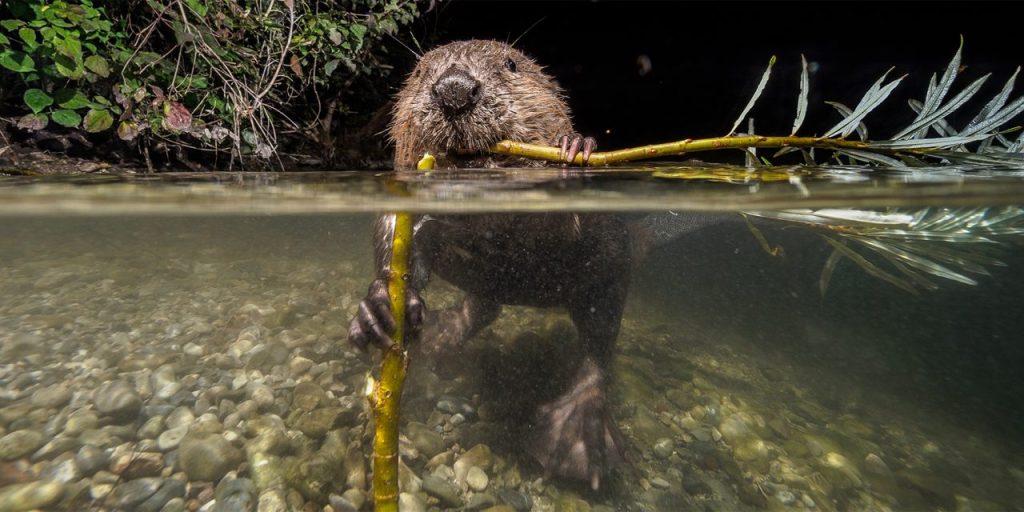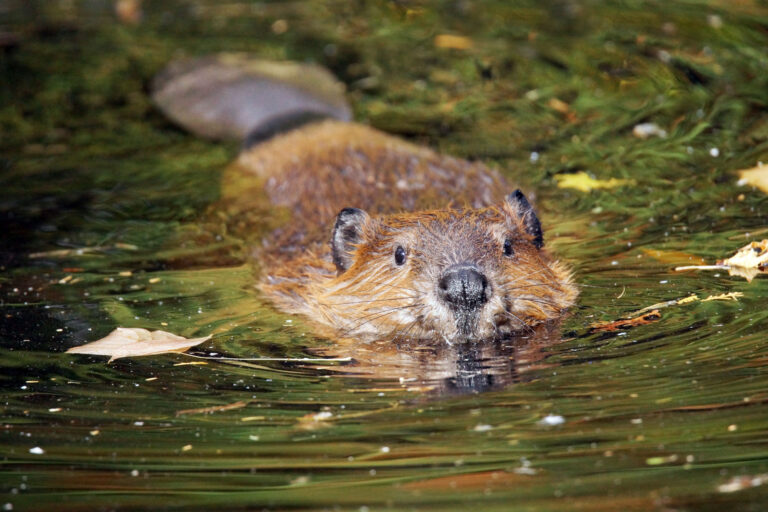
The behavior of beavers in the wild is fascinating and complex. These semi-aquatic mammals, known for their impressive dam-building abilities, exhibit a range of behaviors that contribute to their survival and the shaping of their habitat. In this article, we will explore the behavior of beavers, including their social structure, communication, dam construction, foraging habits, and reproductive patterns.
Social Structure: Beavers are highly social animals that live in family groups called colonies. A typical colony consists of a breeding pair, their offspring from previous years, and the current year’s kits (young beavers). The breeding pair, known as the alpha pair, is the nucleus of the colony and responsible for reproduction and territorial defense. The offspring usually remain with the colony until they are around two years old, at which point they may leave to establish their own territories.
Communication: Beavers communicate with each other through a combination of vocalizations, scent marking, and body language. They produce a variety of vocalizations, including grunts, squeals, hisses, and alarm calls, to convey different messages. These vocalizations are important for maintaining social cohesion within the colony and alerting others to potential threats or danger.
Scent marking is another crucial form of communication for beavers. They possess scent glands located near their anus, which they use to mark their territory and communicate their presence to other beavers. Beavers also use their urine and anal secretions to mark their territory, leaving scent trails that can be detected by other beavers.
Body language plays a significant role in beaver communication as well. They use a variety of postures, movements, and tail slapping to express their intentions and emotions. For example, tail slapping on the water’s surface is a behavior beavers use to warn others of danger.
Dam Construction: One of the most well-known behaviors of beavers is their dam-building activity. Beavers construct dams primarily to create deep-water habitats where they can build lodges for shelter and protection. These dams serve multiple purposes, including flood control, predator deterrence, and access to food.
Beavers build dams by felling trees, often using their powerful incisor teeth, and placing them strategically across streams or rivers. They reinforce the structure by packing mud, stones, and other debris between the logs, creating a watertight barrier. The resulting pond created by the dam serves as a safe haven for beavers, providing easy access to food and protection from land predators.

Foraging Habits: Beavers are herbivores, primarily feeding on the bark, twigs, and leaves of various tree species. They are selective feeders and prefer species such as aspen, willow, birch, and maple. Beavers are excellent swimmers and use their webbed hind feet and paddle-like tail to navigate through water and reach their food sources.
To access tree bark, beavers use their sharp incisor teeth to cut down trees or strip the bark off fallen logs. They often fell trees strategically, allowing them to reach the branches and bark without expending excessive energy. Beavers can fell trees several meters in diameter, an impressive feat considering their size.
To store food for the winter months when access to fresh vegetation is limited, beavers build food caches near their lodges or under the ice. These caches consist of branches and twigs piled together and secured underwater. The beavers can access the stored food during the winter by swimming beneath the ice to retrieve it.
Reproductive Patterns: Beavers have a well-defined breeding season that typically occurs between January and March. During this time, the alpha pair engages in courtship behaviors such as scent marking, vocalizations, and physical interactions. Once the female is in estrus, mating occurs, resulting in fertilization.
After a gestation period of approximately three months, the female beaver gives birth to a litter of kits, usually ranging from one to six offspring. The kits are born fully furred and with their eyes open. They remain in the lodge for several weeks, relying on their parents for nourishment and protection.
As the kits grow older and more independent, they begin venturing outside the lodge and accompanying their parents on foraging trips. They learn essential skills such as swimming, diving, and tree felling from observing and imitating their parents’ behaviors. The kits usually stay with the colony for around two years before dispersing to establish their territories and find mates.

The behavior of beavers in the wild is a fascinating subject that highlights their remarkable adaptability and ecological impact. From their social structure and communication methods to their impressive dam-building capabilities and foraging habits, beavers exhibit a complex array of behaviors that contribute to their survival and shape their environment. Understanding these behaviors not only provides insight into the lives of these unique mammals but also highlights their critical role as ecosystem engineers, influencing the dynamics of aquatic habitats.